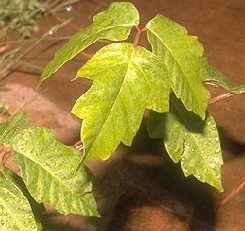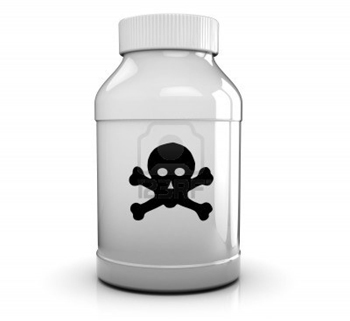
It’s the time of year when backyards attract children, trails beckon hikers, and poison ivy attacks the unwary.
This itch-causing plant pest, along with its cohorts poison oak and poison sumac, cause more common allergic reactions than any other source, said Renee Miller, R.N., a certified specialist in poison information at the Tennessee Poison Center at Vanderbilt University Medical Center.
“Millions of Americans every year develop an allergic rash after being exposed, and these poisonous plants are pretty much everywhere in the United States except Alaska and Hawaii,” she said.
Miller notes that the oils in the plants (not only the leaves, but in the vines and roots as well) penetrate the skin almost immediately after exposure and bind with proteins, triggering the body’s immune system to make antibodies that get activated with each subsequent exposure.
And you get itchy—at least most people do.
“Only about 15 percent of people are resistant to these plants, and sensitivity tends to decrease with age,” she says.
Naturally, the best way not to have an itchy reaction is to avoid exposure in the first place.
“If there’s a risk for exposure, wear long pants, long sleeves, gloves and boots,” Miller said, although she also notes that rubber gloves won’t protect you. The plant oils are soluble in rubber and will penetrate to the skin.
If your skin is exposed, the most important thing is to wash as quickly as possible with soap and lukewarm water. Some people may get a better result with a specially formulated soap that is designed to wash away urushiol, the active itch-causing substance on the plants.
Here’s why it’s important to act quickly: “If you wash within the first 15 minutes after exposure, 100 percent of the oils can be washed away,” Miller said. “If you wait an hour, zero percent can be washed away.”
And just because you haven’t come in direct contact with a plant doesn’t mean you’re safe, because pets and clothes can carry the allergens and can cause a reaction even in people who have not been exposed to the plant.
Miller said that the characteristic rash usually appears within 24 to 28 hours, although it can be quicker or take longer.
If a rash develops, there are still some things you can do to feel more comfortable.
“Once an exposure has occurred, topical steroids and antihistamines are the mainstay for treatment,” she said. “Prescription cortisone can halt the reaction if used early. Unfortunately, once the vesicular stage [with small fluid-filled blisters] has started, treatment with systemic steroids is the only effective solution. Oatmeal baths and cool showers may also be helpful.”















